Remembering Jim Murray: Best of the Best
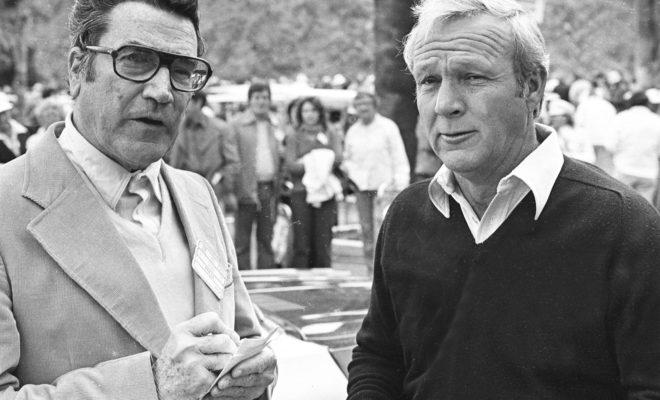
Editor’s Note: Over its 50-year history, FORE Magazine has presented articles by some of the very best golf writers in Southern California and the U.S. It’s a safe bet to say that each and every one of them was a fan of SCGA Hall of Famer Jim Murray, whose writing on golf in the LA Times was both a pure delight to read, and an inspiration to all those who followed. This article by his longtime editor, Bill Dwyer, fondly looks back at one of the best golf writers we’ve ever had the pleasure of reading.
The late, great Jim Murray was what newspapers no longer have. He was a superstar writer. He made words dance and images sing.
Today, the corporations that print dailies, and the cattle they employ to chase internet dollars that will never be caught, would have demanded that Murray tweet and blog and have a TV show. He would have had no time to ponder and compose. What a loss that would have been.
Fortunately, we got Murray in the prime of print media. Most fortunate were those of us who were golfers. He wrote about every sport. He romanced golf. He turned its terminology into life descriptions. Of Jack Nicklaus, after his late-in-life Masters victory in 1986, he wrote: “He is not going gently into that good night. He is going to eagle it.” Of the venerable Sam Snead, after another victory when he should have been much too old to achieve such a thing, Murray wrote: “Sam Snead’s career is now running neck and neck with the Ice Age as an historical era.”
I became sports editor of The Los Angeles Times in 1981, which meant I was Jim Murray’s boss. To even type that is a joke. Murray needed a boss like a headache needs a noisy neighbor. He knew what to write, when to write it and, how to write it better and more creatively than any other sports writer on the planet.
I came from The Milwaukee Journal. Murray was a legend in Wisconsin, too. His syndication took him to most states and more than 150 newspapers, including the morning Milwaukee Sentinel. You read Murray before you went to work. If the paperboy was late, so were you. He would eventually win every sports-writing honor offered and also, about 15 years after he should have, a Pulitzer Prize.
So, it was against this background that, when I called my mother, an avid Murray reader back in Wisconsin, to tell her I had been promoted to sports editor of The Los Angeles Times, I had the following exchange:
Me: “Mom, they just announced I will be the new sports editor.”
Mom: “How wonderful, dear. (long pause). Ah, does that mean you are Jim Murray’s boss now?”
Me: “Well, kind of, I guess.”
Mom: (another long pause) “Oh, good Lord. Are you sure they haven’t made a mistake?”
Murray’s idea of getting to know the new boss was to take him to play golf. At Riviera CC, no less. It wasn’t meant to be intimidating. That was never Murray’s way. But any golf course, especially Riviera, was Murray’s comfort zone. He was an old shoe there. Breakfast before the round included a dozen stoppages for passersby chats about one or another of his recent columns.
“Great line on Weiskopf the other day, Jim…”
“Love the Huckleberry Finn stuff on Watson…”
It occurred to me that I might as well have been having breakfast with Frank Sinatra. This was Hollywood, not a likely place for a kid whose family legacy was steeped in milking cows. I watched Murray. There was friendliness toward all, but nary a moment of preening. Turns out, he was pretty much a shy guy, an ordinary Joe, somebody who had fun and enjoyed sharing it. As I quickly found out.
The first hole at Riviera is the easiest par-5 on the PGA TOUR. Journalists covering the TOUR stop do so from a huge tent sandwiched between the first and second fairways. From inside, it is sport to watch the best in the world play No. 1. Eagles are almost the norm. Any player making a par is quickly dismissed as a possible tournament winner.
So there I was, on that day back in 1981. Old easy No. 1. We took our last sip of coffee and headed for the first tee, right behind the clubhouse and elevated for a great look above and down the fairway you were about to hit to.
I had played a little golf, but those seven months in waist-deep snow in Wisconsin may have hurt my game. Still, when we got to the green of that first hole, I had reached no conclusion as to how this might go or what level of embarrassment I might have to carry around for the next four hours. Murray looked a bit too old and feeble to play a monster course like this, but there he was, somehow, on the green in regulation, although some 60 feet away, with a birdie putt that needed to break three times before flattening out at the hole.
Murray grumbled something about needing a telescope to see the hole, then stroked his putt, which broke three times, flattened out and dropped into the cup.
I think I mumbled a shocked “Wow.” But nothing else was said. Murray walked up to the hole, plucked the ball out and dropped it into his pocket. I completed my three-putt 7 and walked back to the cart, wondering if I could get away with faking illness so I could get out of there. It was one thing having breakfast with Sinatra; an entirely different thing playing golf with Jack Nicklaus.
I sat in the cart, took a deep breath and said to Murray, “Hey, great putt.”
Suddenly, you could tell, he could stand it no longer. The devilish leprechaun could hide no more.
“You know,” he said, “sometimes I miss those left.”
It turns out that that was probably the longest putt he had ever made. He went on to join me in a triple-figure round. We laughed all the way around. He taught me the joys of both the game and Riviera. I learned about the fourth hole, the par-3 into the ocean breeze that Ben Hogan called the best in the game. We both hit drivers to set up our 9-irons in. I heard about Humphrey Bogart’s tree near the green on No. 12, where he would bring a book and a flask to watch the pro tournament. Murray said he walked over and joined him one time. Only Murray would have had the credibility to do that.
And we played No. 18, the famous closing hole, a long par-4 that veers to the right toward trees and needs a drive to carry around 200 yards to get up the hill to the fairway. Years later, in another round together there, Murray sauntered over and said that, at his age, he had only two goals left in his life: To win a Pulitzer and to get a drive over that hill.
When he died in 1998, he had achieved just one of those goals.
Murray wrote with unmatched fluency and creativity about all sports. About golf, he wrote with inspiration.
Of Arnie, he wrote: “Arnold Palmer on a golf course was Jack Dempsey with his man on the ropes, Henry Aaron with a 3-2 fastball, Laver at set point, Joe Montana with a minute to play, A.J. Foyt with a lap to go and a car to catch.”
Of Greg Norman: “You could chop wood with his face. You could win a war with his backswing.”
Of Nicklaus: “You had to beat him. He didn’t do it for you.”
Murray loved it when the course beat the pros. That’s why he loved the U.S. Open so much. Those who make millions walking along plush parkways and swinging little clubs needed the perspective of occasional torture, he reasoned. And the USGA usually complied.
He loved the Masters less, until it allowed black players into its hallowed Southern grounds. Murray campaigned for inclusion in the Masters with biting commentary. In a column on fellow SCGA Hall of Famer Charlie Sifford, who couldn’t get in, he wrote: “This august (sic) Augusta tournament has a complicated formula for selecting a field. If you come from Formosa, it’s easy to get in. If you come from a cotton patch in Carolina, it’s impossible.”
He once got a letter from Ben Hogan for a column he had written. It was a pretty straight, non-exuberant thank you, but it was Ben Hogan, and Murray was so thrilled that he asked his wife, Gerry, if they could frame it, hang it in the foyer and have a candle burning under it. Sensibly, Gerry said no.
He once took my wife with him to a Three Tenors concert during the Olympics in Barcelona and afterward, Pavarotti asked for Murray’s autograph.
He once wrote an entire column about setting a course record at MountainGate CC, the course that looms above the 405 Freeway near the Getty Museum: “Some guys want to climb the Matterhorn. Others dream of singing opera … I always wanted people to point me out as I tee it up somewhere and have them whisper, ‘That’s Jim Murray. You know he holds the record at L.A. North. Shot a 56. In the rain.’”
Murray shot a 93 that day at MountainGate, and his course record held for about a month, until they officially opened the course for play.
I probably edited 150 Murray columns on golf over the years and probably changed five words. When it came to writing about golf, Murray was a kid in a candy shop. The best way to describe it is to do what he always did. Make a golf term into a life description.
Of Palmer, he once wrote: “He tried to make a 2 on every hole.”
Of Murray’s golf columns, I can say: He never bogeyed one.

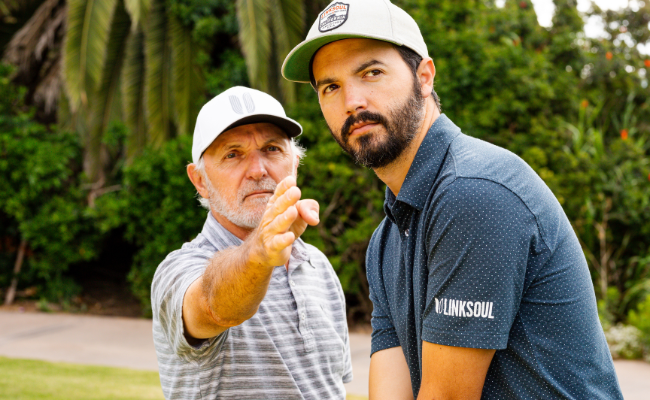

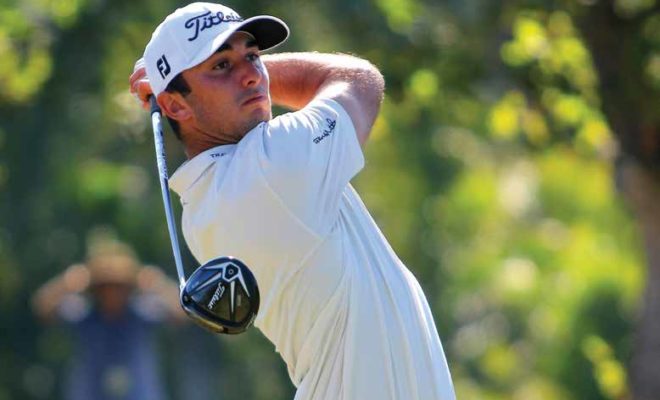


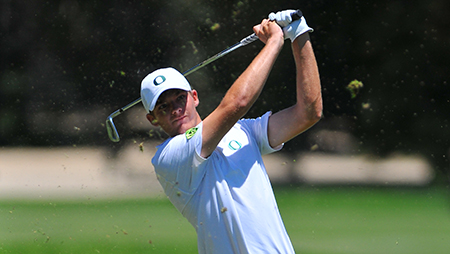



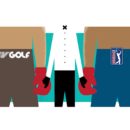

Bill,
Thank you for the great article on Jim Murray. From my high school days to my college years, to when I started working, every morning began with a cup of coffee and the reading of Jim Murray’s column. How I miss that routine. But I am thankful that I have enjoyed hearing Vin Scully broadcast baseball and been able to read Jim Murray. The simple things in life are the most rewarding.
Lou Panizzon
Carpinteria
I like what Lou referenced. I too went to sleep with a transistor radio “hidden” in my pillow case listening to Dodger games called by Vin Scully and I woke up to a breakfast with my father sharing what Jim Murray wrote in the Times. I miss the simplicity of the ’50’s and my innocence of the purity of sport.
Odd, when I woke that radio was off. “thanks Mom” she never said a word.
Rich Hubbell
Coto de Caza
I and I am sure many others appreciate your writing on the late, great Jim Murray. I have been missing him for quite some time so it was good to see him in print again. I came to So.Cal. in my late 20’s and now I am in my late 60’s, so I read Mr. Murray for a great many years; enjoying him tremendously, reading him religiously. I think we shall never see his like again.
So again I say thank you very much for the stroll down memory.
Yours very truly, Gregory Itzin
Thanks Bill for the missive on the venerable Jim Murray. Periodically I’ll re-read the collection of articles the LA Times published and sold shortly after he passed away. At first I thought it opportunistic. Now I’m eternally grateful and think you might have had something to do with it, so thank you! The collection occupies my bedside reading table when the world gets too noisy. Which is far too often these days.
I was at a gathering of SCGA club presidents in the fall of 1999 and Gerry Murray was the guest speaker. She was good too, a lot of Mr. Murray in her, humble, witty and captivating. It was a great honor to be there. She mentioned the Hogan letter but maybe there were several. Her story was they had dinner with Ben and Valerie Hogan and a few weeks later Jim received a thank you letter from Ben. He was so honored to have received a letter from the great Ben Hogan he wanted Geary to have it framed and hung in a prominent place in their home. She replied, “the Pulitzer already occupied that spot”. He said, “Well take it down and hang the Hogan letter there and can you put a light on it?”